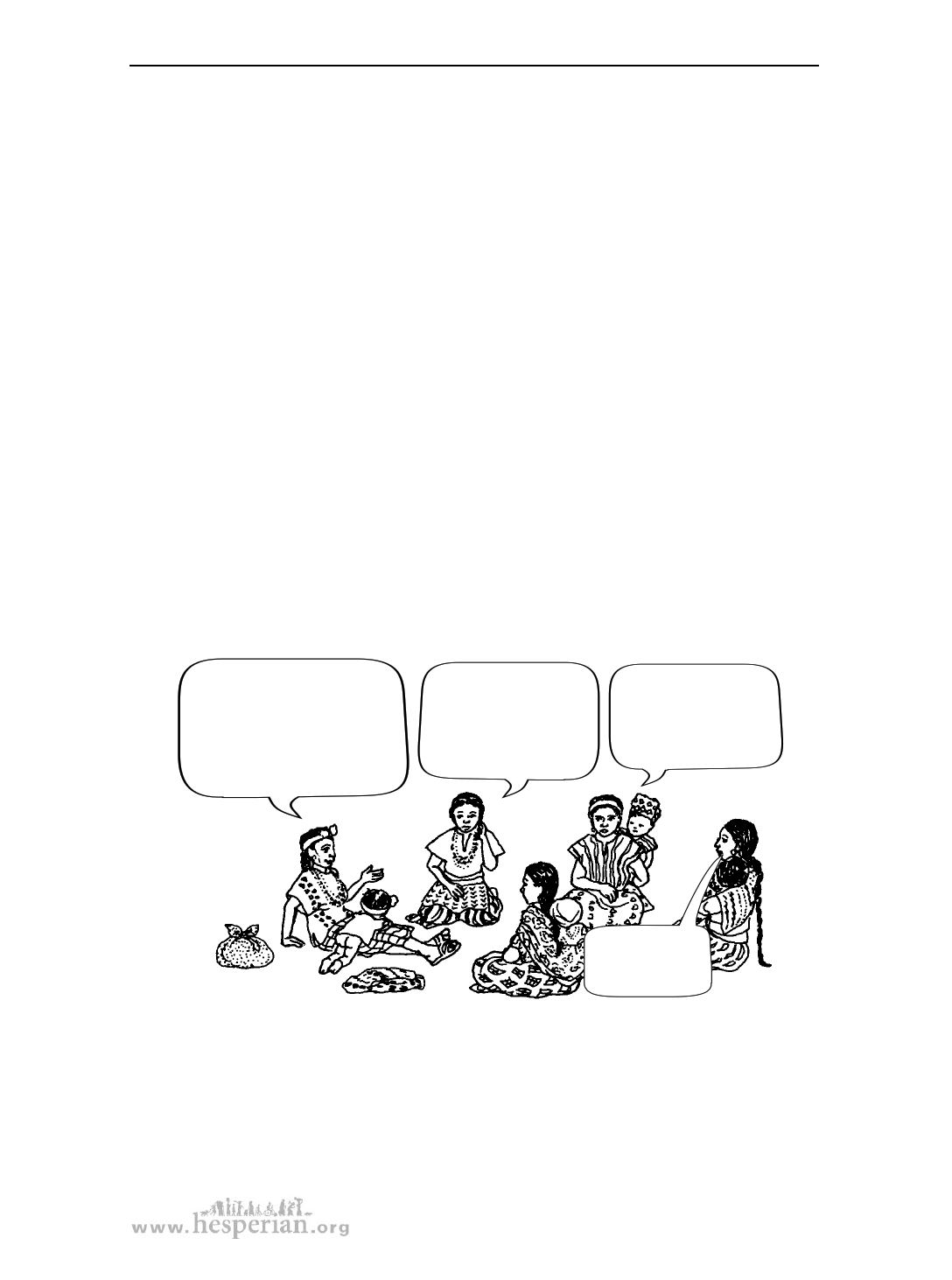
Share what you know
For example, if a group of women wants to learn about sexually transmitted
infections (STIs), you can first ask each person to share what she knows about STIs.
Women may know about STIs from books or classes, from talking to other
women, or from having had infections themselves.
After people have shared their knowledge, find out what questions they have.
People in the group may be able to answer each other’s questions. You can
probably add some important medical information and point out when people
have incorrect beliefs too. By encouraging the group to talk, you find out what
they really need to know — and help them understand how much knowledge they
already have. A person who feels confident that she understands a problem is more
able to work to solve it.
Show respect for the people you teach, and be sure that what you say is
meaningful to their lives.
• Sit in a circle with everyone on the same level. This puts you in the same
place as everyone else, and shows that you are not the only one with
knowledge.
• Be prepared. Think about what you want to share before you start teaching.
• Use many methods to teach. People learn differently, and everyone learns
better when they learn the same thing in different ways. After you talk with
the group about STIs, the group could act out a play about them. Or make
posters about STIs to share with the community.
You all said you want to
learn about what to eat
during pregnancy and
after the baby comes.
What do you know about
healthy eating now?
I’ve heard you
should not eat
meat when you are
breastfeeding. It
will harm the baby.
That’s not true!
You need to eat
meat to make the
blood strong!
But we
cannot afford
to buy meat!
Asking questions will help you understand what people already
know, what they want to learn, and what obstacles they face.
Remember, some people are used to speaking up in groups. Others may be
afraid. Encourage women, those who have little schooling, or anyone who usually
keeps quiet to share his or her thoughts. For more ideas on how to teach so people
can truly learn, see Helping Health Workers Learn.
A Book for Midwives (2010)
5